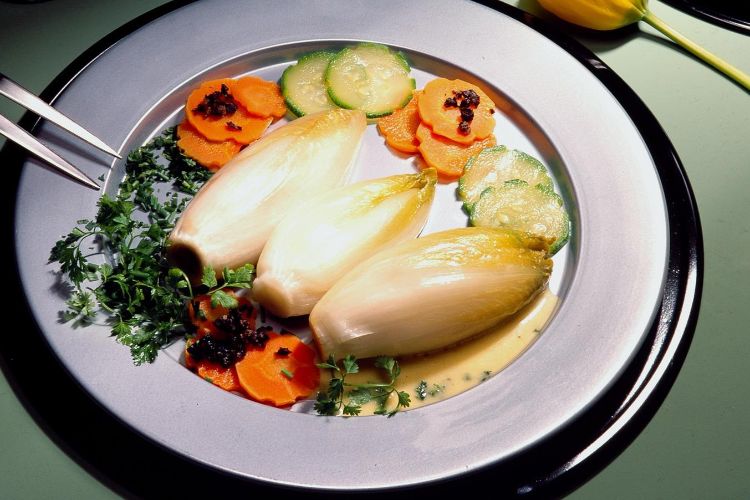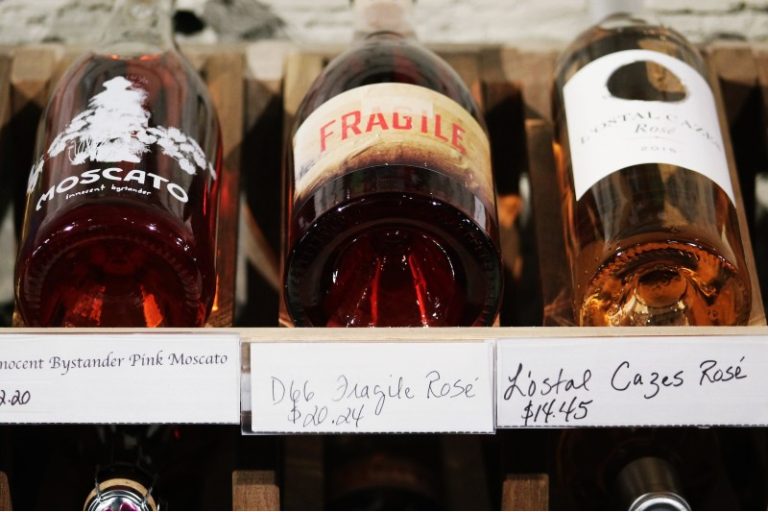‘From a Polish Country House Kitchen’ by Anne Applebaum and Danielle Crittenden
A recent addition to my collection, ‘From a Polish Country House Kitchen’, published by Chronicle Books, is a timely and adventurous cookery book, offering a fascinating perspective on modern Polish cuisine whilst retaining a traditional and authentic interpretation of Eastern European food.
Polish food is a relatively unknown cuisine outside of the mother land, and there are many misperceptions too of Polish food being greasy, heavy and burdened with boiled cabbage and potatoes. Written by American-born Anne Applebaum and Canadian-born Danielle Crittenden, ‘From a Polish Country House Kitchen’ offers modernised Polish recipes along with an insight into the history and heritage of Polish food.
This is a cookbook that tells many stories – of restoration, re-birth and of the discovery, by both Anne and Danielle, of a simple, seasonal way of cooking. Danielle tells us in the preface that Anne and she were “unlikely cookbook authors”, though both of them are experienced and successful writers and journalists in their own fields.
As an acclaimed historian and columnist, Anne’s career has hitherto focused on the politics, rather than the food, of Eastern Europe. One of her books, ‘Gulag: A History’ (a narrative account of the origins and development of the Soviet concentration camps), earned her the 2004 Pulitzer Prize for non-Fiction. She is no stranger to Eastern European history and so her knowledge places the recipes and food stories shared into a wider historical context. Sometimes this includes anecdotes from friends, family and contributors, acknowledged in headnotes. There are tales, too, of Poland’s fondness for “foreign queens and imported monarchs” that led many foreign influences from Russia, Germany, Sweden, France, Italy, Hungary and Turkey to permeate Polish cuisine. For example, we learn that stuffed Cabbage Rolls, or “Little Doves”, are closely related to the stuffed grape leaves of Greece, whilst Pierogi, Polish dumplings, share a likeness to dim sum or even Italian ravioli.
In 1988 Anne Applebaum’s husband, Radek Sikorski, an esteemed politician (currently Poland’s Minister of Foreign Affairs), purchased and set about restoring with his parents a long-neglected early nineteenth century Polish manor house in western Pomerania. With few shops around them, Anne and her mother-in-law tackled the replanting of the kitchen garden and greenhouses, planting as many seasonal vegetables as they could alongside rows of apple, pear, walnut and cherry trees. Instead of relying on supermarket ingredients, Anne focused on fresh and locally available ingredients according to the season, and thus “learned how to cook food that was, if not exactly traditional, then at least in the Polish spirit”.
Anne’s co-author, Danielle Crittenden, is a Washington-based journalist and author whose career has centred on women’s issues rather than recipes. She had been invited to stay with Anne and Radek at their Polish country house, and became instantly smitten with the Polish countryside, riding and picnicking in the forests, watching Anne bring in baskets of fresh plums from their fruit trees.
So it was that Anne set about collecting Polish recipes, whilst Danielle went back to Washington to test recipes and re-create Polish food from her own kitchen, making sure all the ingredients were widely available outside of Poland. She also uncovered some recipes from her husband David’s Polish-Jewish family and notes “the overlap between Polish and Jewish culture”.
The result of their transatlantic culinary collaboration is a 90-recipe cookbook filled with “the food of a high culture, now reborn; the food of so many of our ancestors, reinterpreted for health-conscious contemporaries”.
Fresh ingredients feature frequently, in the most part inspired by Anne’s kitchen garden at their restored manor house. Seasonal offerings include young beets, new potatoes, earthy carrots and parsnips, leeks, onions, colourful squash, rhubarb and fruit such as ripe, flavourful plums, strawberries, currants, apples and pears.
Typical Polish ingredients appear, too – wild mushrooms, such as Borowiki (like porcini), found in abundance in the woods, deer from nearby farms, free roaming ducks and chickens kept by villagers, in a way that makes you want to track them down yourself or visit your local farmers’ market.
Most of my existing Polish cookery books contain no pictures at all, just text, along with many variations on pickled herrings, beetroot and potato dishes which do little to dispel worldwide preconceived notions that Polish food is dominated by sour tastes and stodge. The photographs and styling in this book, by husband and wife team Bogdan and Dorota Bialy, are stunning and striking, depicting ingredients that are fresh, seasonal and local.
As I cooked my way through some of my favourite recipes in the book – a Wild Mushroom Soup, Grandpa Ben’s light and fragrant Cucumber Salad, Poached Chicken-in-a-Pot, Duck Breasts with Pears and Shallots, fluffy Apple Pancakes dusted with icing sugar, I too developed a greater understanding and a deepening of culinary knowledge. Although I admit some bias; I am of direct Polish descent and so many of the recipes in the book were already familiar to me. I found that the most unusual ingredient to source was juniper berries, which lend a very distinctive flavour to Polish stews and sauces.
There are herrings in this book, yes, but they are lifted and lightened with a simple dressing of apples, limes and raspberries. Just as my own mother would always have a pan of soup on the stove, here you will find a Traditional barszcz, as well as a jazzier barszcz spiked with balsamic vinegar and a very light, pink-tinted Summer Beet Soup or Chlodnik, enjoyed throughout the summer with sweet beets and crunchy cucumbers.
There are also Eastern European literary references weaved into the recipes. Mushroom-picking, “famously conducive to romance”, and historically and presently a part of Polish social life, is depicted with quotes from a scene in Anna Karenina. Poland’s own literary hero, Adam Mickiewicz and his epic poem Pan Tadeusz is referenced as well.
Hand-picked versions of Poland’s best-loved recipes are sensitively presented. As Anne wrote the book, large pots of Bigos, or Hunter’s Stew, with wild mushrooms, smoked sausage or kielbasa, pitted prunes, would bubble away on the stove, ready and eager to welcome hungry guests alongside thick slices of dark peasant bread.
The majority of the recipes are modern, however, and many are new and enticing, even to a reader with no ancestral Polish heritage at all. The instructions are in the most part clear and easy to follow and measurements helpfully given both in imperial and metric.
But perhaps the real treat comes at the very back; Poles know exactly how to deliver a sweet hit. For this purpose, there are Nalesniki, or Rolled Pancakes with Powidła or Damson Jam, a Plum Cake, an Orange-Saffron Rum Cake, a Lithuanian Honey Cake and Two Mazureks, a light, simple Cheesecake with a Strawberry-Redcurrant Sauce and a variation with Vanilla Sour-Cream Icing.
Polish food is the “ultimate comfort food” and this book manages to dispel everything that one might have previously believed about Polish and Eastern European food.
Further information
‘From a Polish Country House Kitchen’ is published in the US by Chronicle Books.
Follow Anne Applebaum on Twitter @AnneApplebaum
Follow Danielle Crittenden on Twitter @DCrittenden1
A selection of recipes can be found at facebook.com/FromAPolishCountryHouseKitchen

